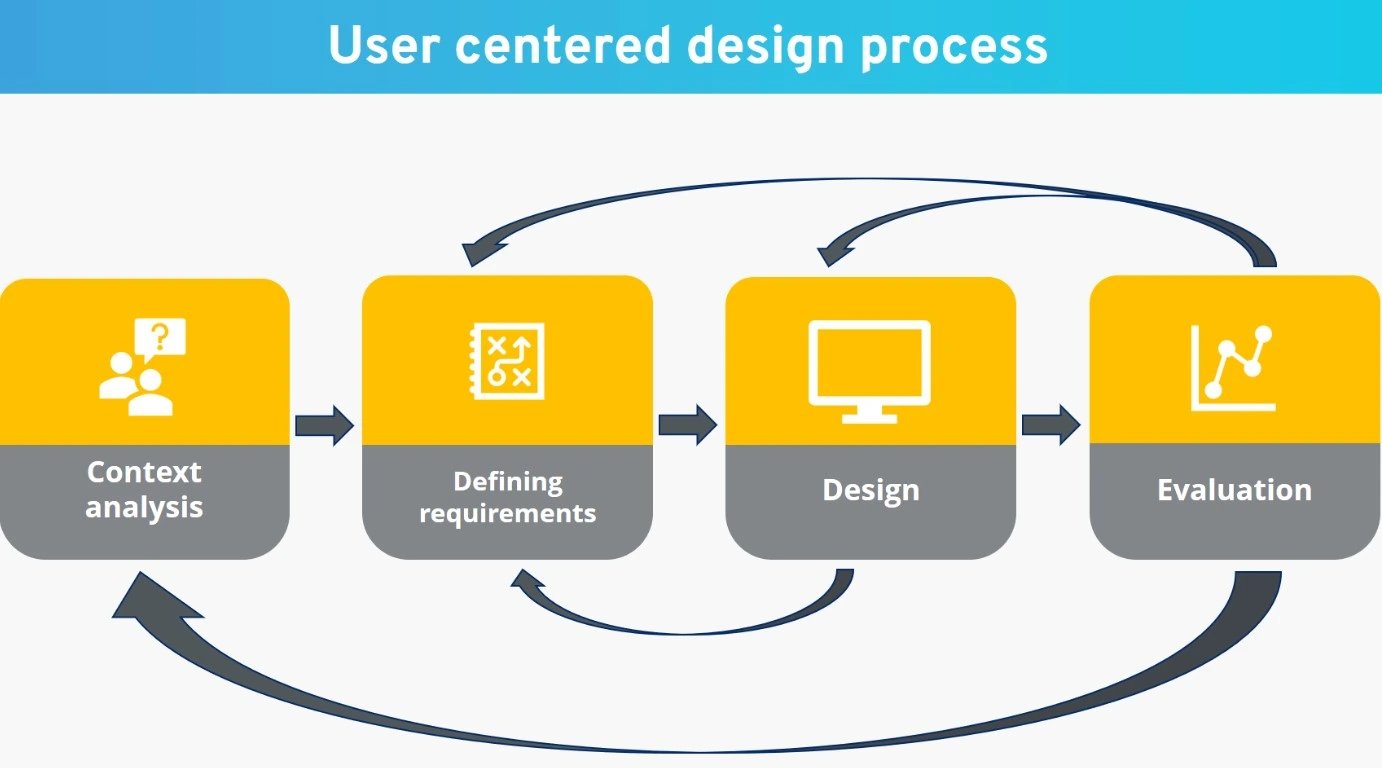
With a focus on user-centered design, your Web Design can effectively capture leads and engage customers, ultimately benefiting your business. This approach puts your audience at the forefront, ensuring that every design element resonates with their needs and preferences. By prioritizing user experience, you not only enhance your design brand but also improve your presence on social media, drawing in more visitors. Join Mister Nguyen Agency in exploring the principles of user-centered design and discover how to create a compelling online experience that fosters connection and drives conversion.
Understanding User-Centered Design
To effectively create a successful website, it’s important to grasp the concept of User-Centered Design (UCD). UCD focuses on placing your audience’s needs, preferences, and behaviors at the forefront of the design process. By putting yourself in your customers’ shoes, you’ll enhance their experience on your site, ultimately driving engagement and boosting your business’s performance.
Definition and Principles
The core of User-Centered Design revolves around understanding and prioritizing users’ needs throughout the development process. By employing research, prototyping, and iterative testing, you ensure that your website addresses the unique concerns and expectations of your audience, making it easier for customers to navigate and find what they’re looking for.
Importance in Web Design
Against the backdrop of a competitive online marketplace, user-centered principles are important for your web design strategy. Prioritizing what your customers truly need fosters a connection between your brand and your audience, which can significantly impact conversion rates and lead generation.
Hence, adopting a User-Centered Design approach not only enhances user experience but also contributes to the overall success of your business. By focusing on your audience, you’re likely to see increased customer satisfaction, more leads, and better retention rates. Investing in UCD with help from experts like Mister Nguyen Agency ensures your social media and design brand align with your customers’ expectations, elevating your website to new heights.
Researching Your Audience
It’s necessary to thoroughly research your audience to create a website that effectively meets their needs. Understanding your customers’ preferences, behaviors, and pain points will enable you to tailor your business’s online presence. By prioritizing audience research, you can design a site that not only attracts leads but also strengthens your brand image, enhancing the overall user experience.
User Personas
Researching user personas allows you to develop detailed profiles of your target audience, helping you visualize and understand their motivations. This practice enables you to create a more tailored experience for your visitors, taking into account their specific needs and preferences. By describing characteristics such as demographics, interests, and goals, you can craft your website’s design and content to better resonate with your audience.
User Surveys and Feedback
An effective way to gather valuable insights about your audience is to conduct user surveys and seek feedback. This method allows you to gain direct input from your customers, which can guide your design and content decisions. Surveys provide you with quantitative data, while feedback offers qualitative insights that help you understand your audience’s preferences more deeply.
The use of user surveys and feedback is an excellent approach to improve your website and enhance its effectiveness in generating leads for your business. By asking specific questions about user experience, functionality, and aesthetics, you can identify areas for improvement and gather actionable insights. Incorporating this feedback into your design process not only creates a website that meets your customers’ expectations but also aligns with your overall business goals, establishing a stronger connection with your audience. Utilize platforms like Mister Nguyen Agency or social media to distribute surveys and gather responses efficiently.
Designing with the User in Mind
Despite the technical aspects of web design, prioritizing user experience is crucial for engaging your audience. A well-designed website caters to your customers’ needs, making it easier for them to navigate and find what they seek. This approach not only enhances satisfaction but also fosters loyalty, encouraging users to return to your site. Ultimately, a user-centric design strategy can effectively convert leads into long-term customers for your business.
Wireframing and Prototyping
To bring your design to life, wireframing and prototyping are invaluable steps. These tools allow you to create a visual representation of your website, illustrating layout and functionality before development. By testing early mock-ups with users, you can gather feedback that informs your design decisions, ensuring a smoother and more intuitive experience when the site goes live.
Accessibility Considerations
After establishing a user-centered design, consider accessibility to reach a broader audience. Your website should be navigable and usable for everyone, including those with disabilities. Implementing features such as alternative text for images and keyboard navigation not only fulfills ethical considerations but also helps enhance your brand perception, as you demonstrate a commitment to inclusivity.
Also, focusing on accessibility can directly impact your business’s bottom line. By making your website more accessible, you can tap into a larger market segment, improving customer satisfaction and potentially increasing sales. Consider consulting experts like Mister Nguyen Agency to ensure that your design is inclusive and effectively promotes your brand across social media platforms. Incorporating accessibility features not only benefits your customers but also establishes your business as a leader in thoughtful design.
Usability Testing
After you have designed your website, usability testing becomes an imperative step to ensure your audience can easily navigate and interact with it. By observing real users in action, you can identify any pain points and areas for improvement.
Types of Usability Tests
On your journey to enhance your website, there are several types of usability tests you can implement:
| Test Type | Description |
| Moderated Testing | In-person or remote sessions guided by a facilitator. |
| Unmoderated Testing | Participants complete tasks independently without a facilitator. |
| Remote Testing | Allows users to participate from their own devices at home. |
| In-Person Testing | Direct observation of users interacting with your website. |
After conducting these tests, you will gain valuable insights into how customers interact with your site.
Analyzing User Feedback
Above all, analyzing the feedback received during usability tests is key to understanding your users’ experiences. By closely examining user interactions and comments, you can pinpoint what works well and what needs improvement.
Understanding user feedback involves not just tallying comments but diving deeper into the context in which they were made. Evaluate the trends in the feedback to discern patterns and identify common issues users face. This analysis will guide your decisions in refining your website, enhancing its design, and ultimately increasing customer satisfaction and leads for your business. A clear focus on feedback can set the path for a website that resonates with your audience and drives engagement, vital for your branding efforts. Employing an agency like Mister Nguyen can further elevate your social media efforts and overall design brand strategy.
Iterative Design Process
Not all design processes are linear; the iterative design process allows you to refine your website continuously based on user feedback. By involving your customers throughout the design journey, you can identify pain points and enhance their experience. This approach not only improves usability but also aligns your website more closely with your audience’s needs, ultimately driving better business results. Embracing iteration means ensuring your design evolves as your customers do, leading to increased satisfaction and better engagement.
Importance of Continuous Improvement
Importance of continuous improvement in your web design ensures that your website remains relevant and effective in meeting customer expectations. As user preferences and technology change, you must be ready to adapt. By regularly analyzing user feedback and performance data, you can make informed decisions to refine your design. This proactive approach helps in retaining customers, generating valuable leads, and strengthening your brand presence in the competitive digital landscape of your business.
Adapting to User Needs
Before you can make meaningful changes to your website, it’s crucial to understand your audience’s evolving needs. Gathering feedback from your customers will provide insights that can guide your design decisions and help you address increasing demands. By staying attuned to user expectations, you can make targeted improvements that enhance the overall experience and meet the specific desires of your audience. This level of adaptability is key in building trust and loyalty among your customer base.
Considering your customers’ preferences and behaviors, you can create a more user-friendly experience that fosters engagement. Analyzing usage patterns, conducting surveys, and leveraging social media feedback allows you to pinpoint areas that require adjustments. By being receptive to your customers’ needs, you will make better-informed design choices, strengthening your brand identity and improving your website’s performance. Mister Nguyen Agency emphasizes the importance of these practices; they can help you convert leads into loyal customers while cultivating a solid online presence that represents your business effectively.
Best Practices in User-Centered Web Design
Unlike traditional design approaches that prioritize aesthetics, user-centered web design focuses on creating an optimal experience for your audience. This involves understanding your users’ needs and preferences to shape an intuitive website that enhances engagement. By actively involving your customers in the design process, you can build a business website that not only attracts leads but also fosters lasting connections through thoughtful design elements.
Key Strategies for Effective Design
Best practices in user-centered web design include conducting user research, creating wireframes, and utilizing prototyping tools. By gathering insights about your target audience, you can ensure your website meets their expectations. Incorporating feedback from potential customers will guide your design process, enabling your business to create a user-friendly experience that stands out in today’s competitive landscape.
Common Mistakes to Avoid
Along the journey of designing your website, it’s important to steer clear of common pitfalls that can detract from user experience. Overloading your website with too much information or visual clutter can overwhelm your customers, leading to confusion and disengagement.
Avoid neglecting mobile optimization, which is important given that many users access websites via smartphones. Also, steer clear of complex navigation structures that make it hard for your customers to find information quickly. Failing to prioritize your audience’s needs can diminish your credibility and hinder your business’s growth, ultimately affecting your leads and conversions. Focus on simplicity, clarity, and accessibility to create a website that effectively serves your audience.
Final Words
With this in mind, embracing user-centered design in your website development will significantly enhance your business’s relationship with your customers. By prioritizing their needs and preferences, you create a user-friendly experience that generates leads and fosters brand loyalty. At Mister Nguyen Agency, we understand that integrating social media and thoughtful design into your brand can transform how customers interact with your website. By focusing on your audience first, you pave the way for success in the digital landscape, ensuring that your business remains relevant and engaging.











